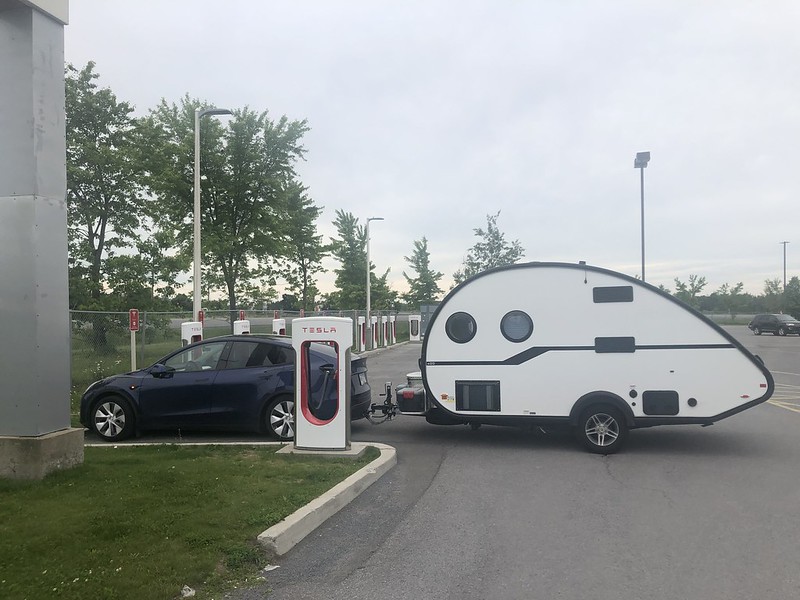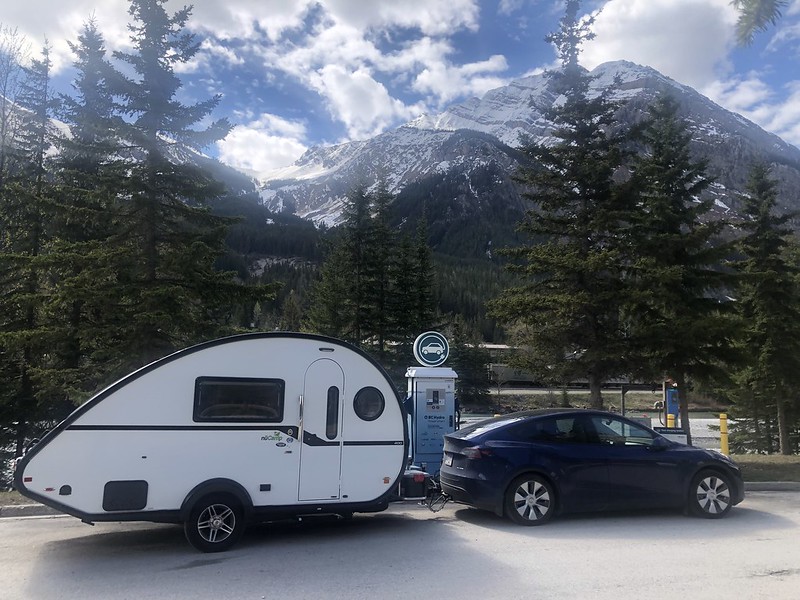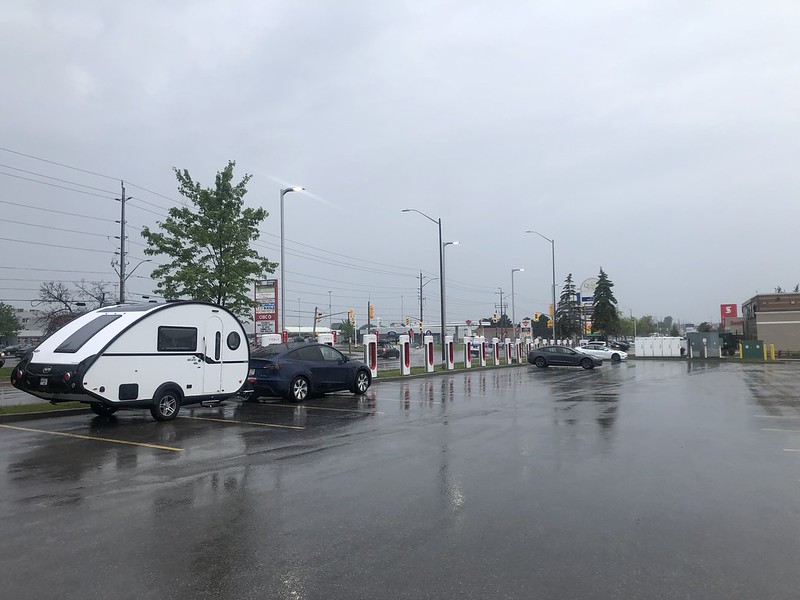Forum Discussion
Reisender
Jul 24, 2022Nomad
Tvov wrote:
I didn't think it took that long to charge at charging stations. At one point in the video he is below 25% (I think) and it takes 45 minutes to get to 80%? At that point he gives up and continues driving. And again later in the video he charges just about to 80% and then says "Good enough" and starts driving. Is there something about charging to 100% that I missed?
I understand that there are differences in charging stations, but I assume the big fancy chargers are the fastest ones? Something about "superchargers"?
This makes me want to time how long to fill my gas truck. Next time I'm at 1/4 tank I will try to remember to time it. Usually seems to be under 5 minutes.
He also commented that going through some hills (mountains?) he really drained the battery.
The "auto drive" is interesting.
Oh, I lol'd about him adding that little air deflector. I was skipping through the video.... did that actually help at all?
Good morning Tvoy. I don't have answers to most of your questions but I can probably help in regards to the fast charging.
So yes DC fast charging is quite often faster than what you see in the video...but it depends. Certain cars like Hyundai Ionics. Porche Taycans and Teslas can charge quite fast. For us a typical charge stop at a Supercharger is 20 minutes. But this is why the ford truck doesn't see those times.
- For some reason Ford has capped the charge speed to 150 kw. This means that even if it is at a 200 or 350 kw station the fastest charge speed it will achieve is 150 kw.
- Trucks have batteries literally almost twice as big as cars so it takes longer.
- EV drivers tend to unhook around 80 percent as the charge speed tends to taper off after 80 percent. Everybody charges to 100 percent overnight before a trip because they are sleeping while its charging. But at a charge station you are waiting so it makes more sense to disconnect and move on. We do this although its not uncommon for us to wait till 90 percent. After that it starts to slow down quite a bit. At lunch its not uncommon for us to hit 100 percent but on typical charge brakes 85 to 90 is more common, at least for us.
And just a little help with the nomenclature. Here are a few pics of of us charging at various chargers and what they are called.
This is a Supercharger. It is a Tesla Supercharger and the name Supercharger is only used when talking about Tesla. Tesla Superchargers nowadays are usually V3 Superchargers which means they charge at max 250 Kw. The older ones (and there are still a few around) are 150 KW and the new V4's being built are 325 KW. Our car can only charge at 250 kw so even if I connect to a V4 Supercharger the car will limit to 250 kw. My point is charging depends on both the car and the charger. Superchargers are essentially just Tesla branded DC fast chargers. Superchargers in North America can only be used by Teslas. In europe there are a small number of Superchargers that can be used by other electric vehicles. This is a test program from Tesla. Mostly in Holland Germany and France and some in Britain. Tesla has indicated they may extend that test program to north America on the new V4 stations but hasn't confirmed that yet. Teslas use a different connector so its not that easy.

Here we are charging at a public DC fast charger. Essentially a non Tesla Supercharger, but they never get called that. This one is 50 KW so quite a bit slower than a Supercharger. But there are more and more 100, 200 and even 350 kw machines being installed. Some of the main charge chains are FLO, Chargepoint, EVGO, Electrify Canada, Electrify America and a bunch of other regional companies like BC hydro in BC. These public DC fast chargers are open to all EV's (although Teslas use an adaptor to adapt the physical plug)

This is a BC hydro DC fast charger. Pretty spot and easy trailer access.

Charging infrastructure is in growth mode across north America right now although we have a long way to catch up to Europe and Asia. I saw a list of permits pulled by the various charge chains a few months ago and its pretty big. Hopefully there will be more pull thru trailer stalls as there are more and more EV trucks that will be pulling small trailers hitting the road. Right now we just have to find a way to make it work which is usually not that bad as our trailer is only 18 feet. Not a big deal but it made our cross country trip interesting as we never knew what to expect at the next charger for trailer accessibility. If we thought we were going to inconvenience anyone by taking up multiple spots we just unhooked the trailer. It only takes a minute to unhook and maybe two minutes to hookup so no excuses for causing someone an inconvenience. We travel during the day when Superchargers tend to be quiet so quite often we could make it work without having to unhook. Surprisingly many of the public stations were better set up for trailers,.



Hopefully that helps Tvoy.
Cheers and safe travels.
About Travel Trailer Group
44,056 PostsLatest Activity: Dec 27, 2025